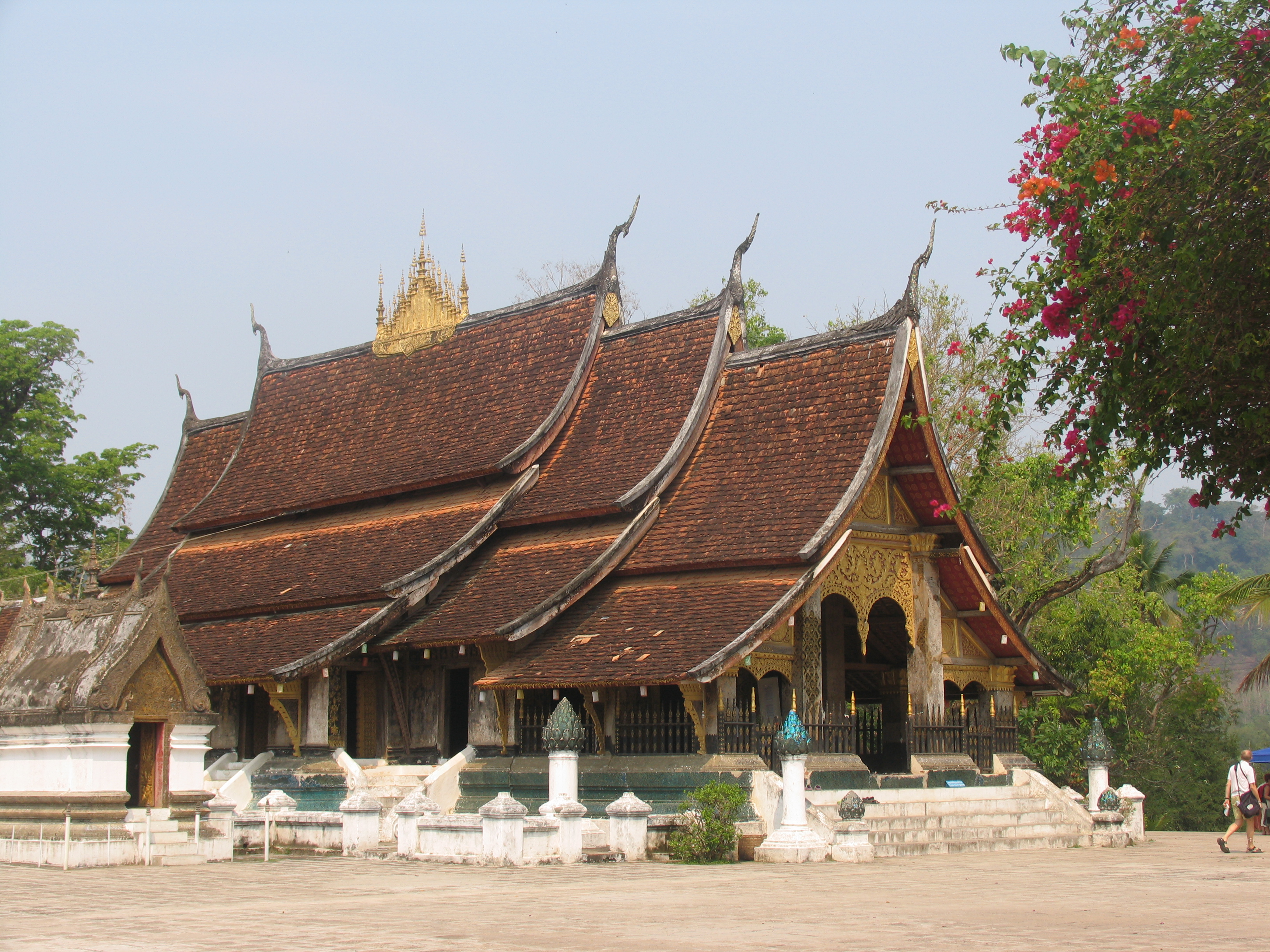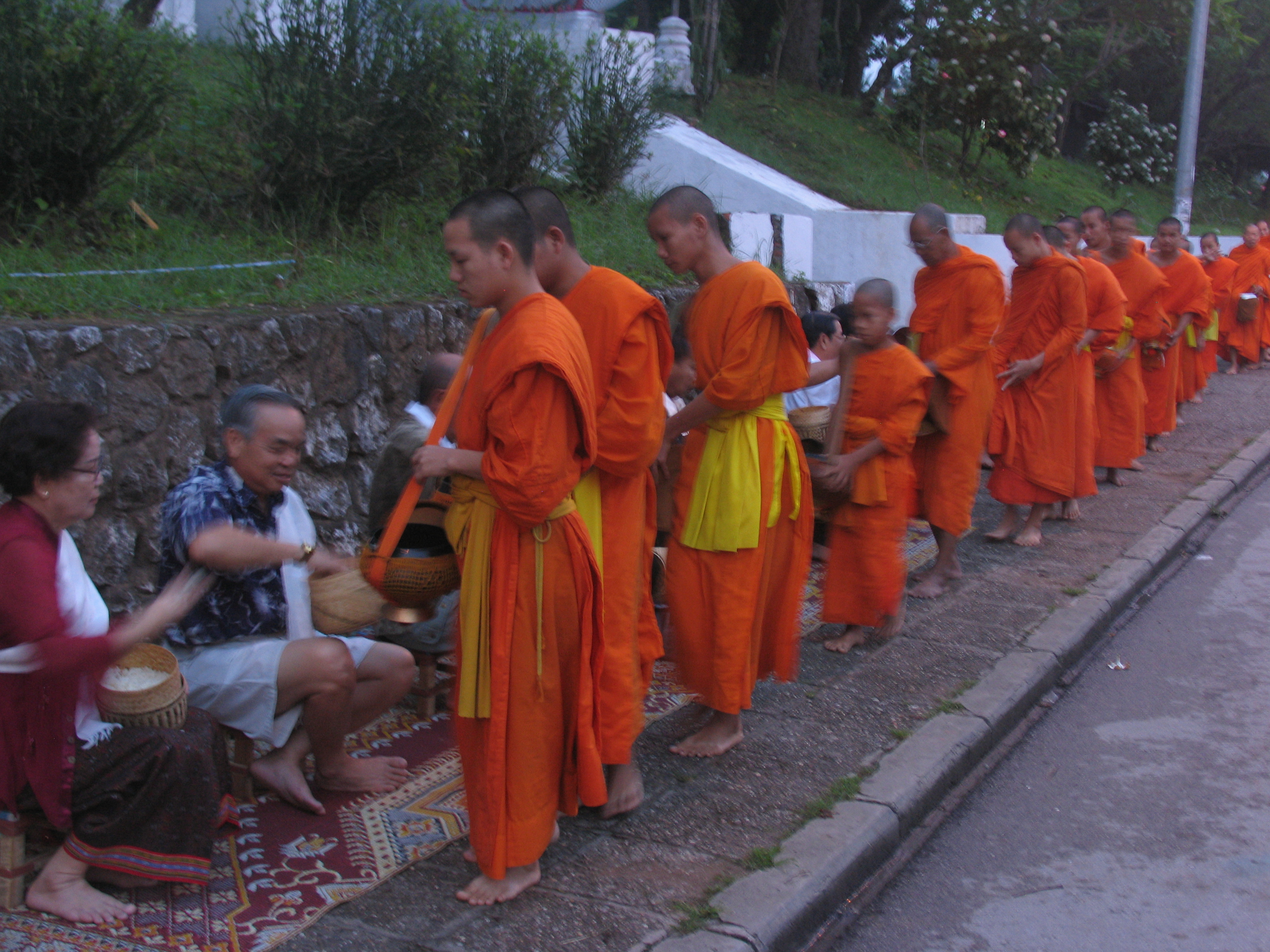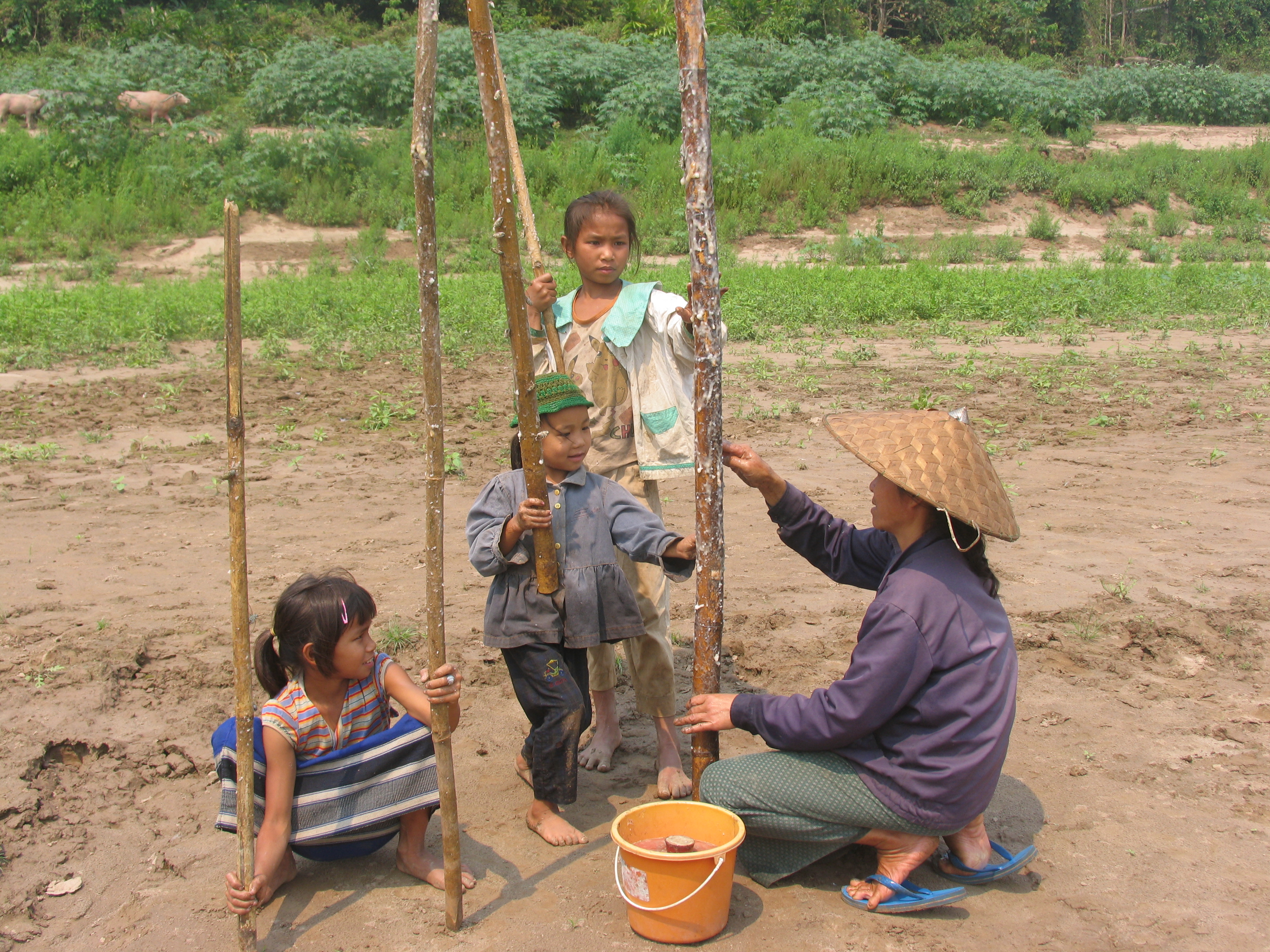

Laos (2008)
The Kingdom of a Million Elephants
Our visit to Luang Prabang, the ancient capital of Laos, was a three day, two night side trip sandwiched in between a trip to Bhutan and our train ride on the Orient Express. It was a short, 90 minute plane ride north from Bangkok to Luang Prabang.
 |
 |
Wat Xiang Tong Temple - Luang Prabang Bhuddist Monks Receiving Morning Rice Donationse
Situated at the confluence of the Mekong and the Nam Khan rivers, the ancient Lao capita of Luang Prabang is one of the more enchanting towns in Southeast Asia with its ancient temples, French colonial architecture, tropical palms and river views. Long isolated by its remote geography and its more recent political circumstances, it seems to have been lost in time through the years and is only now becoming an increasingly popular tourist destination. Its 500 year old temples and magnificent French colonial-era buildings are attracting a growing influx of visitors to marvel at its picturesque setting and unspoilt landscapes.
Known as the Kingdom of a Million Elephants, the city was founded in 1353 and remained as the capital city until 1563, when the capital was moved to Vientiane, the current administrative capital. Luang Prabang continued as the royal capital until 1975, when the Pathet Lao communist party abolished the monarchy. It was designated as a World Heritage site by UNESCO in 1995 insuring that the once forgotten city will be preserved for future travelers.
Our hotel, the Phou Vao (which means House of Kites) was one of the nicest hotels in which we’ve stayed in our travels. Nestled in an expansive, lush garden setting, the hilltop hotel has an aura of serenity and elegance and boasts a world class restaurant. With its jungle surroundings, ceiling fans, white coated houseboys and gin and tonics served on the veranda, it has a charm and romance reminiscent of decades past, to which I could easily become accustomed.
We rose before dawn on our first morning to go into town for the morning alms round, in which scores of orange-robed monks emerged from their monasteries to process in long lines through town, receiving offerings of rice and fruit from the Buddhist faithful. It is an exercise in humility for the monks and gives the laymen a chance to gain merit. Valerie bought a basket of sticky rice from a street vendor and joined the row of donors to dole out the food in the brass bowls of the monks. Shi will get the merit, but I got the photographs.
We had the services of a Lao guide for our two days. We visited several of the village’s many temples including the 16th century Wat Xiang Tong, the town’s oldest and most striking temple with its elaborate carvings and mosaics and graceful sloping roofs set in its own compound filled with bougainvillea. The main street of Luang Prabang was lined with some beautiful homes dating back to the French colonial period. The street itself had few cars but was filled with three wheeled tuk-tuks and with bicycles, guided by their riders with one hand while holding a parasol in the other hand as protection against the blistering sun.
The second day we took a slow river boat up the Mekong River to the Pak Ou caves, a place of worship since the 16th century and filled with thousands of images of Buddha. The caves were about 15 miles up river; the Chinese border was another 250 miles or about four days further. We remembered that in our dating years we used to slow dance to the old song “I’d Love to Get You on a Slow Boat to China”. It took 50 years but our wish finally came true.
Although the sacred caves were our destination, the sights along the banks of the Mekong were the highlight. There were small family gardens with corn, sweet potatoes, pumpkins, squash and peanuts. There were herds of water buffalo, which are rounded up to help during the rice planting season but roam freely for the rest of the year. We even spotted an elephant carrying teak logs down to the river’s edge.
 |
 |
River Boat at Sacred Caves on Mekong River Laotian Children Collecting Locusts for Dinner
Perhaps the most unusual sight was a group of young children walking up and down the shore carrying long poles extended high in the air. It was like a parade but without any flags, only the flag poles. Since we were the only passengers on the boat, our driver offered to pull up on the bank for a closer look. It turned out that the children were helping their mother capture locust-like insects for their evening meal. After the mother had smeared the poles with sticky rice, the children marched about with their bamboo poles held high as the insects were attracted to the sticky material and were trapped on the pole. The woman periodically stripped the locusts off the poles and re-applied the sticky stuff and sent the kids off for another load. As is often the case in our travels, it is these serendipitous moments that turn out to be the most delightful.
Our final evening poolside dinner at the hotel was memorable both for the excellent cuisine and for the setting. As twilight fell we could see the golden temple across the river illuminated with flood lights . Swallows flitted above the pool in search of their evening meal. The songs of unseen and unrecognized birds punctuated the silence. The evening turboprop flight from Vientiane droned by, its landing lights searching out the airport runway in the valley below.
But the most magical touches were the 50 luminaries hanging from the surrounding trees, the 50 lighted candles floating on the pool and my beautiful wife of 50 years sitting across the table from me. It was one more special moment in our year-long 50th anniversary celebration.